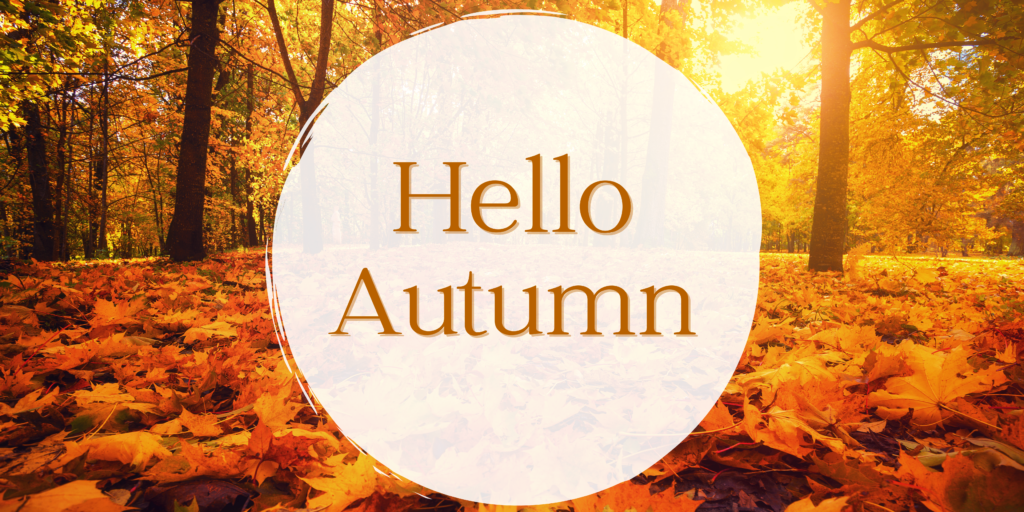The Transition Into Autumn

As the long, warm, and carefree days of summer are replaced with short days, cold air and the crunching of fallen leaves underfoot, there is a feeling of a general downshift in the pace of life that can feel a little jarring.
If you are someone who hates to say goodbye to summer, we have put together a list of things to do to make the transition into the autumn and winter that wee bit easier on you.
Get outside as much as you can (especially if you WFH)
We all know by now that getting outside is really important for lots of reasons, but when the days become shorter, darker, and colder it can be difficult to find the motivation. Aside from reducing stress and helping to boost your brain (which are two great benefits of winter walks if you work from home), did you know that getting outside also helps to rejuvenate the skin, improves quality of sleep, and helps to keep your immune system strong!
Going for a walk doesn’t need to be something you do alone either. Walking and chatting with a friend or joining a walking group can be a really fun social exercise, all while benefitting from all of those physical and psychological benefits of the fresh air.
Journal – if you want to
Autumn is a time of transition. In nature, the leaves change colour, the temperature drops, and the trees become bare. For humans, autumn signals the end of another year growing closer. Autumn can be a time to reflect on the intentions and goals you set at the start of the year, a time to look back at what you have achieved in the year so far, and to plan how you will spend the remaining months. It’s good to acknowledge the feelings brought from periods of transition and reflection, while not allowing those feelings to overwhelm you.
Journaling is a method of writing down all of the thoughts that are floating around in your head, sometimes making so much noise that it’s difficult to focus on the here-and-now. You don’t need much to start journaling – just somewhere quite to go, and something to write on. If you don’t have a pen and some paper to hand – your notes app on your phone will do just fine!
If you have a lot of thoughts in your head, it might help to just ‘brain dump’. This is when you simply write down every thought that is floating around your head until the thoughts are out of your head and on to the paper.
Alternatively, if you are negatively affected by the dark mornings, journaling can also be used to help practice gratitude at the start of your day. Gratitude journaling is simple: when you wake up, think of 3 things you are grateful for and write them down. Don’t think too much about it – just ask yourself ‘what am I glad that I have in my life today, big or small’, and get writing! Gratitude journaling is thought to improve happiness, positivity, and self-esteem – all great benefits for everyone, but especially those who struggle with their mood through the autumn and winter.
Make time to see people
Socialising plays a really important role in our overall wellbeing, and it’s especially important not to be a hermit in the winter months. I know what you’re thinking – can’t I just stay cosy at home and binge watch a Netflix series? But pushing yourself to get up and out, especially in the winter when you really don’t feel like it is so crucial.
- Socialising brings happiness. Spending time with people we like releases dopamine – the brain’s happy chemical which can help fight off feelings of SAD (seasonal affective disorder)
- It might help us stay active (remember those winter walks with friends from earlier?)
- It reduces feelings of isolation and loneliness.
Why not take advantage of the season and arrange a weekly hot chocolate walk with a close friend? Or invite some of your favourite people round for dinner once a month. Or choose a new park to explore every weekend with a friend and notice the changes to the leaves, temperature, and weather each time you go.
It doesn’t have to be expensive; it just has to be something that will help keep you and those around you in high spirits this winter.
Root yourself in routine
When your morning alarm goes off and you open your eyes only to be met with a room of darkness it can be difficult to bounce out of bed, eager to start the day. When autumn arrives your summertime routine, good intentions and sometimes your motivation often get left behind, which is why when the turn of the seasons comes around, many of us find it useful to switch up our daily routine accordingly.
When the whole day is a varying shade of dark, routine habits like eating lunch at your usual time, or brushing your teeth in the morning might fall by the wayside. Finding a new daily routine will help give your days structure and may help with feelings of productivity and achievement.
If there are aspects of your summer routine that you really don’t want to get rid of during winter, look for ways to make it fit sensibly into a typical winter’s day. For example, if you are a morning walk type of person, why not adjust the format of your day slightly to allow time for a lunch time walk while there is a little more daylight instead.
If you need it – try light therapy
Sometimes all of the walks in the world just can’t make the struggle of the dark winter days go away. If you feel like you need a little extra help, you could try light therapy. Light therapy is a treatment for seasonal affective disorder (SAD) that can be done at home using a light therapy box, or SAD lamp. A light therapy box mimics natural daylight and helps your body make vitamin D. Some people find that sitting in front of a light therapy box for 30 minutes each day helps to improve their overall mood in the winter months.
Although you can buy light therapy lamps without a prescription, it’s best to speak to your GP or another healthcare professional before you buy one or begin using one to treat symptoms of SAD.
